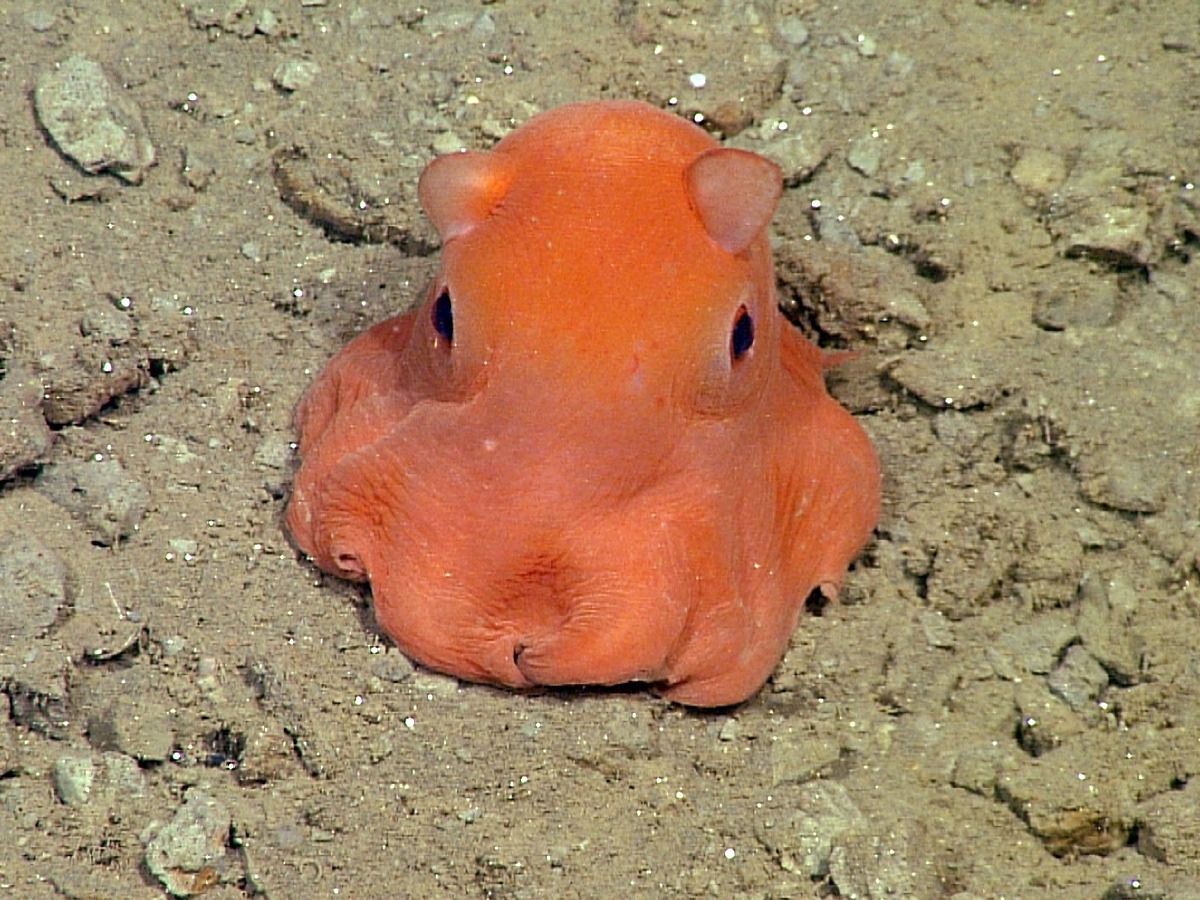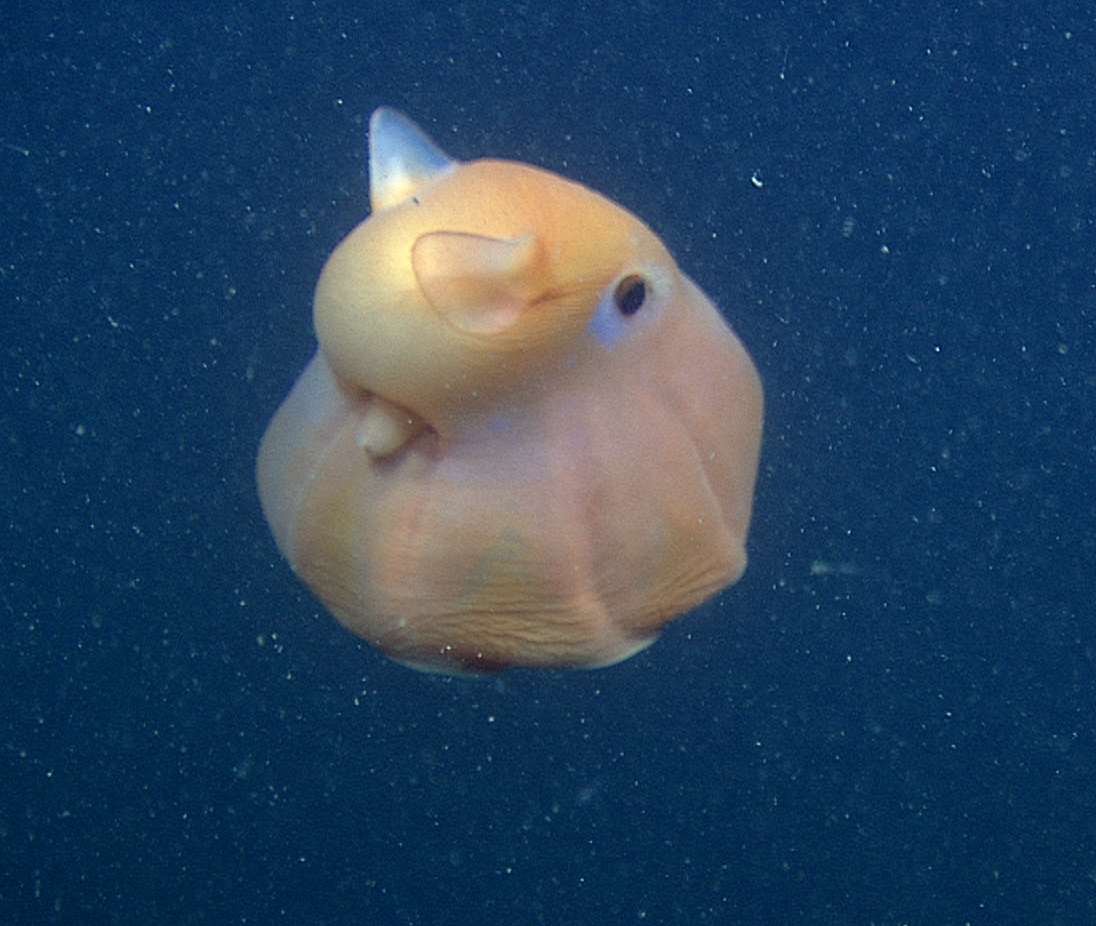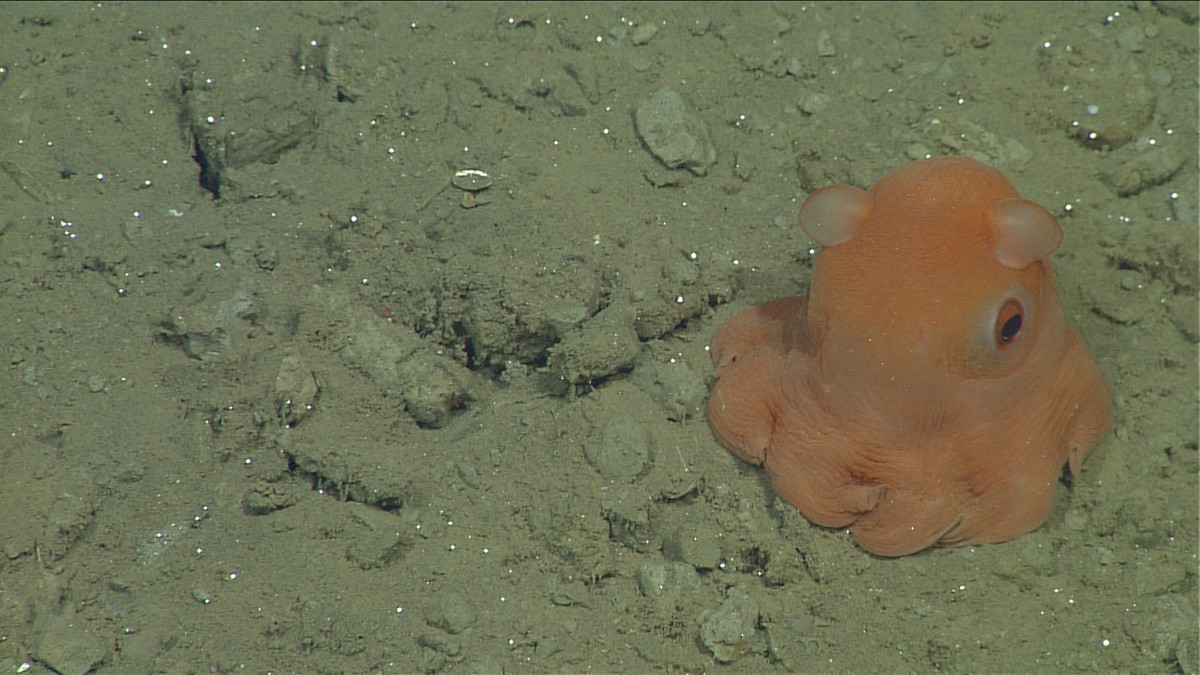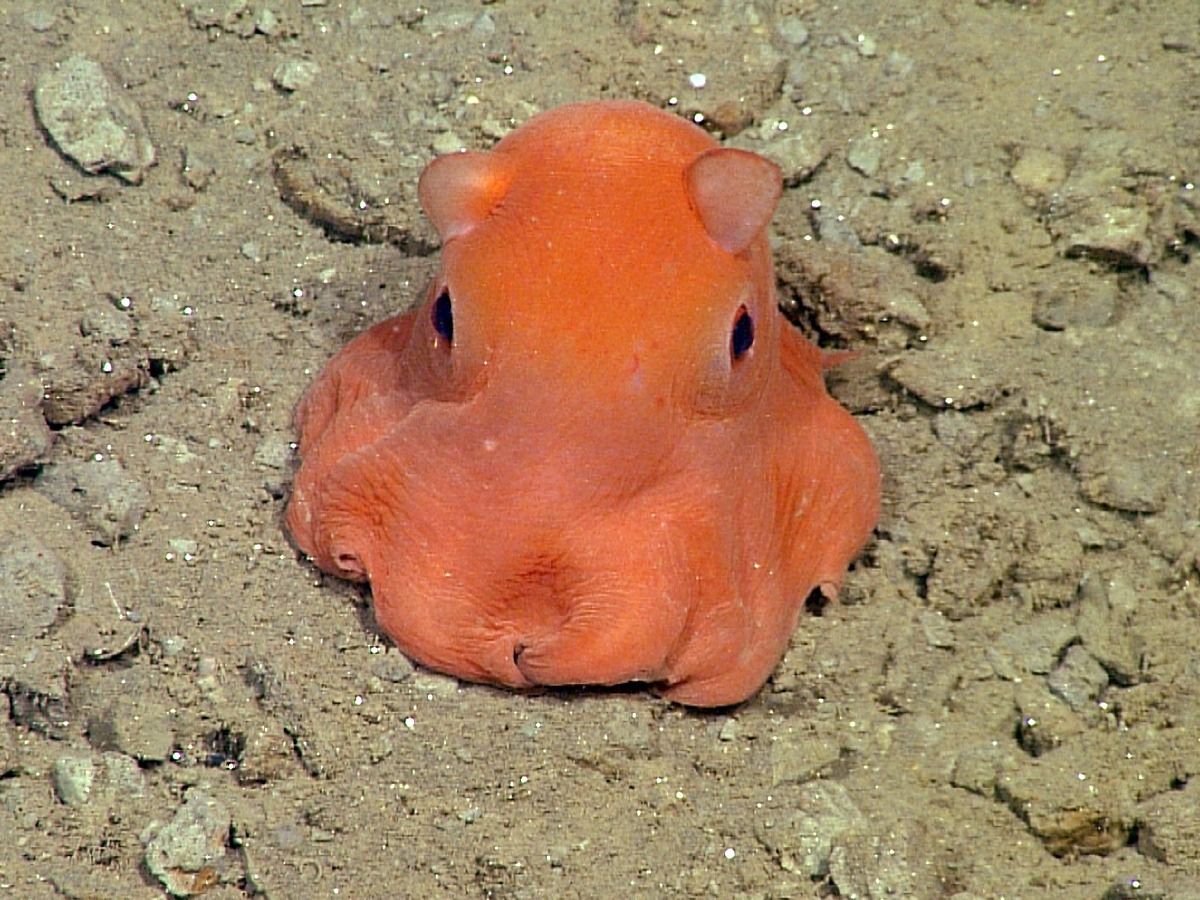The Adorable Deep-Sea Pancake
Imagine a creature so adorable it could easily pass as a Pokémon character. Meet the flapjack octopus (Opisthoteuthis californiana), a deep-sea dweller that looks like a fluffy pancake with a gelatinous body and stubby arms. Its large, expressive eyes and webbed arms, which resemble an umbrella when spread out, make it one of the most endearing creatures of the deep. Unlike other octopuses, the flapjack lacks chromatophores, the cells that allow color change. This means it can’t camouflage like its cousins, but its bright orange or red coloration serves another purpose—one that’s just as fascinating.

Image Source: OctoNation
Invisible in the Deep
In the deep ocean, where sunlight barely penetrates, the flapjack octopus’s red or orange coloration becomes its greatest asset. Red light is filtered out at depth, rendering the octopus nearly invisible to predators. This natural invisibility cloak allows it to blend seamlessly into its dark surroundings. While other octopuses rely on chromatophores for camouflage, the flapjack’s unique adaptation ensures it remains hidden in plain sight. It’s a perfect example of how evolution has tailored this species to thrive in the abyss.
Life in the Abyss
The flapjack octopus calls the deep Pacific Ocean home, particularly off the coasts of Japan and California. It prefers resting on the seafloor in silty areas with little rock, at depths ranging from 130 to 2,350 meters. These cold, dark waters are a harsh environment, but the flapjack has adapted perfectly. Its gelatinous body allows it to float effortlessly, and its webbed arms help it steer through the water with ease. Despite its seemingly delicate appearance, this octopus is a master of survival in one of Earth’s most extreme habitats.

Image Source: Monterey Bay Aquarium
A Unique Diet
Feeding in the deep sea is no easy task, but the flapjack octopus has it figured out. Its diet consists of small worms, crustaceans, and other invertebrates. Using its suckers and cirri—tiny hair-like projections on its arms—it probes the seafloor for food. While it may not be the fastest or strongest predator, its slow, deliberate movements are effective. By blending into its surroundings, it can approach prey unnoticed, making it a stealthy hunter in the deep.
Reproduction Mysteries
The reproductive habits of the flapjack octopus are as intriguing as its appearance. Females can store sperm from multiple mates and carry between 200 to 500 eggs. Unlike many octopus species, the female flapjack does not brood her eggs. Instead, she lays them under rocks and leaves them to develop on their own. This strategy might seem risky, but in the deep sea, where predators are fewer, it’s a viable approach. The eggs can take over a year to hatch, ensuring the next generation of these adorable creatures continues to thrive.
Movement and Defense
Swimming isn’t the flapjack octopus’s strong suit, but it has a unique way of moving. It pulsates its body and uses its webbed arms to steer, gliding through the water like a jellyfish. Unlike other octopuses, it lacks an ink sac, a common defense mechanism. Instead, it relies on its coloration to stay hidden. This lack of ink might seem like a disadvantage, but in the deep sea, where predators rely more on sight than smell, it’s a clever adaptation.
Predators of the Deep
Despite its stealthy nature, the flapjack octopus isn’t without enemies. Sharks, fishes, fur seals, and even sperm whales are known to prey on this little octopus. Its survival hinges on its ability to remain invisible. By staying close to the seafloor and blending into its surroundings, it avoids detection. It’s a constant game of hide-and-seek in the deep, and the flapjack is a master of evasion.
The Cuteness Factor
It’s no wonder scientists initially considered naming this octopus Adorabilis. Its charming appearance has captivated marine biologists and the public alike. From its big, Bambi-like eyes to its ear-like fin flaps, the flapjack octopus is a deep-sea celebrity. Its cuteness has even made it a star in popular culture, though its portrayal isn’t always accurate. For example, Pixar’s Finding Nemo featured a flapjack octopus named Pearl, but the film got several details wrong, including her ability to ink—which real flapjacks can’t do.

Image Source: MBARI
Common Misconceptions
One of the biggest misconceptions about octopuses is that all of them can change color. The flapjack octopus is a prime example of why this isn’t true. Without chromatophores, it relies on its natural coloration for survival. Understanding these unique adaptations helps us appreciate the diversity of life in the ocean. The flapjack octopus is a reminder that not all creatures fit the mold, and that’s what makes them so fascinating.
The Future of the Flapjack Octopus
As deep-sea exploration continues, we’re learning more about the flapjack octopus and its role in the ecosystem. Its unique adaptations make it a valuable subject for scientific research. Protecting its habitat is crucial, as the deep sea faces increasing threats from human activities. By studying and conserving this enigmatic creature, we can ensure that future generations will continue to marvel at the adorable flapjack octopus.
References:
Flapjack Octopus Facts – OctoNation – link
Flapjack Octopus – Monterey Bay Aquarium – link
Flapjack Octopus – MBARI – link
Categories: Cephalopods, Deep-Sea Creatures, Do you know, Marine Life
Tags: cephalopods, Deep-Sea Creatures, flapjack octopus, Marine Biology, Ocean Life
Religion: None
Country of Origin: Japan, United States
Topic: Marine Biology
Ethnicity: None



